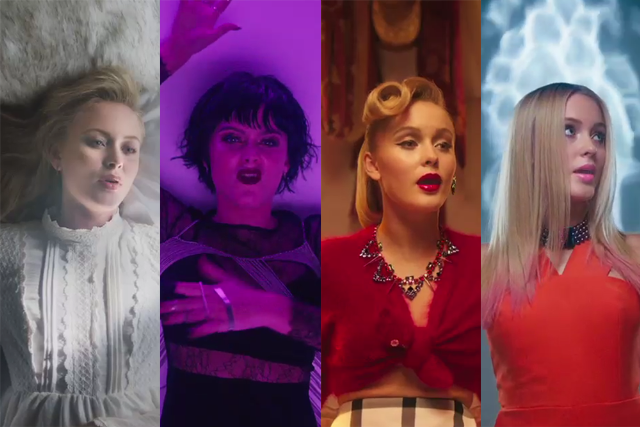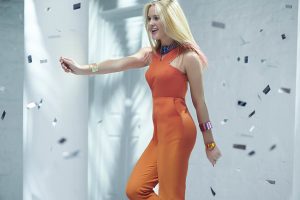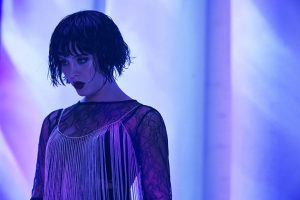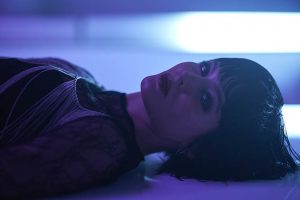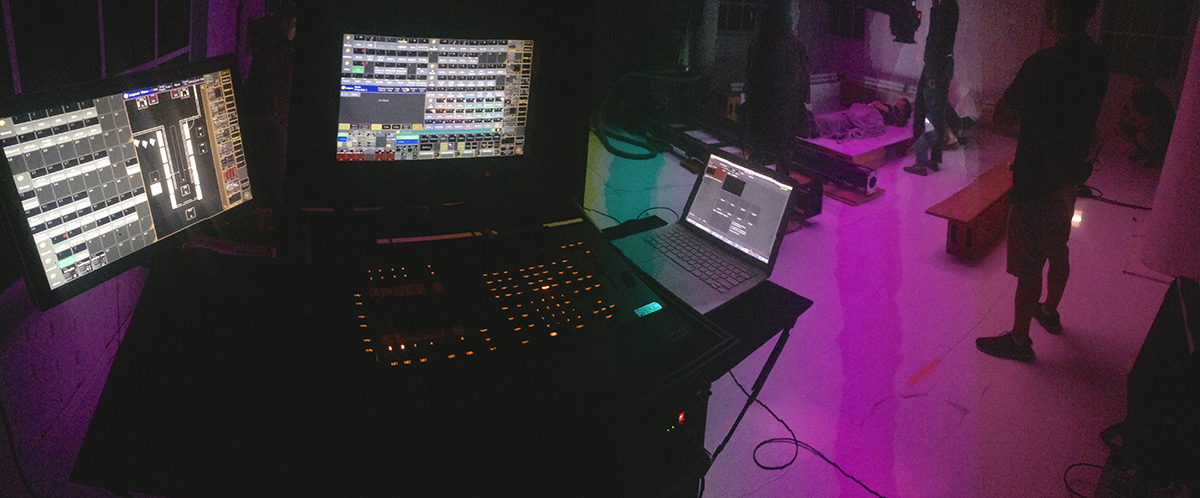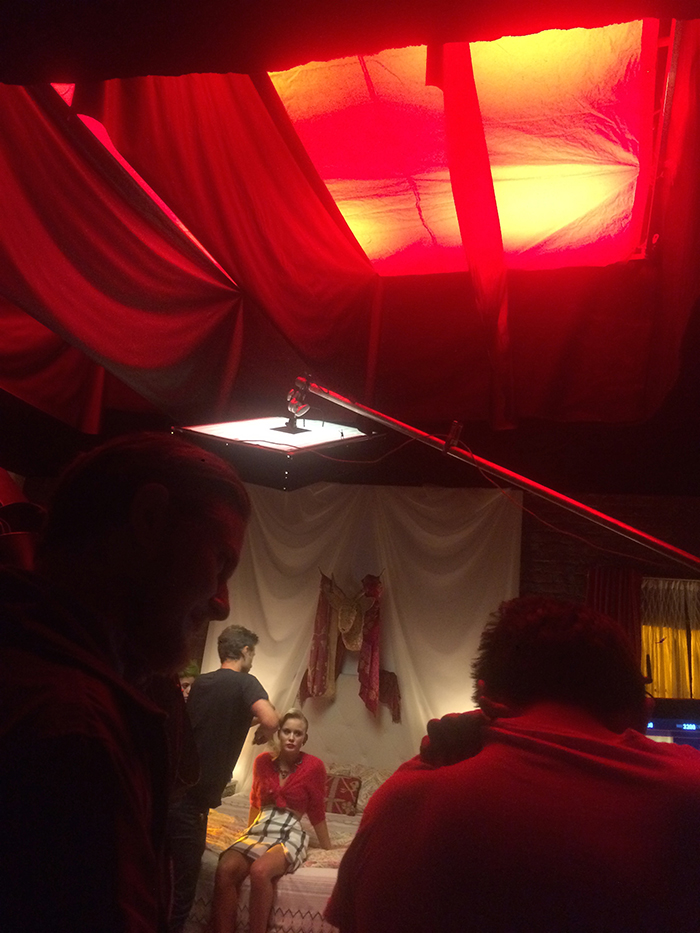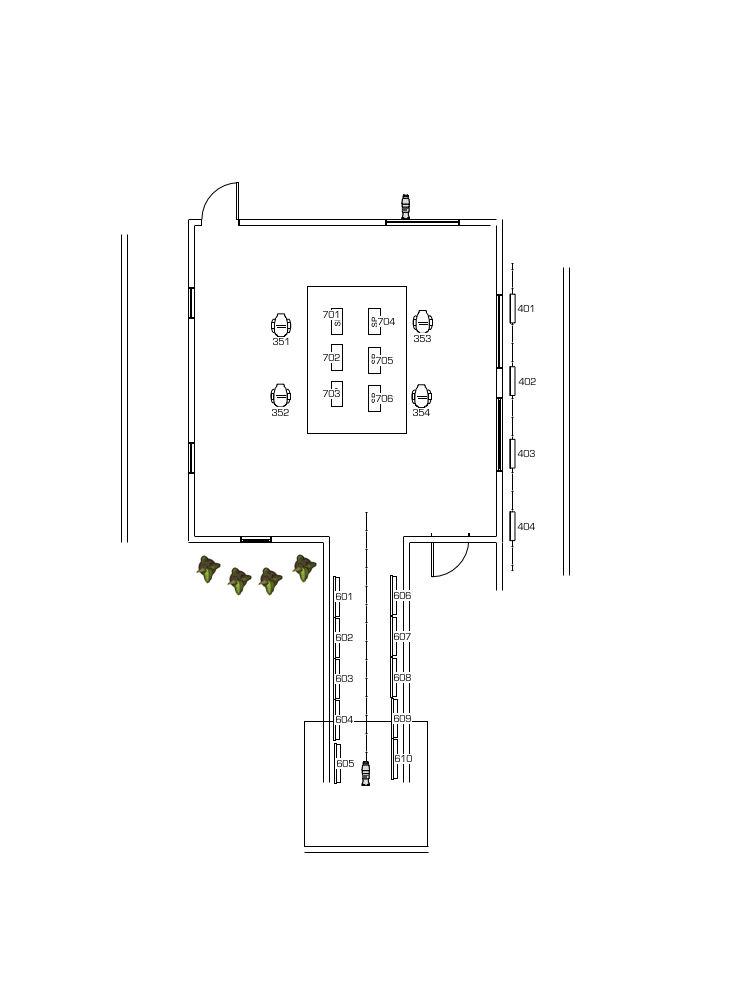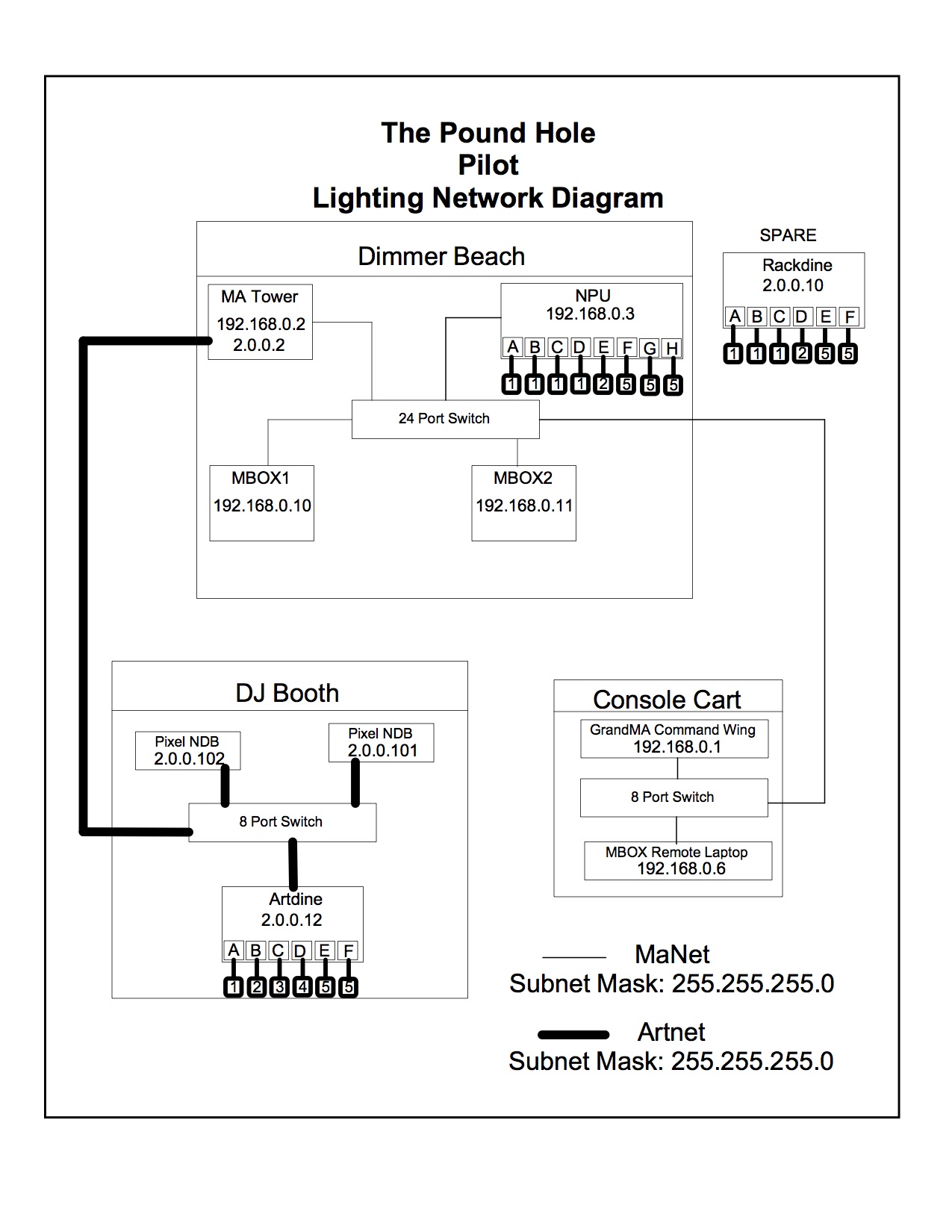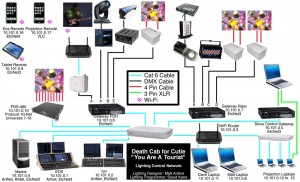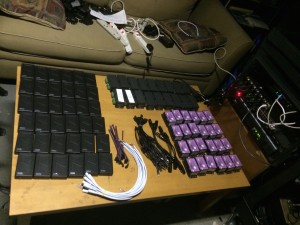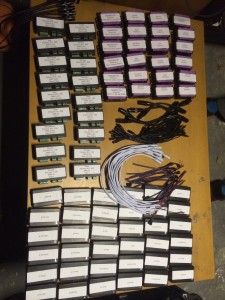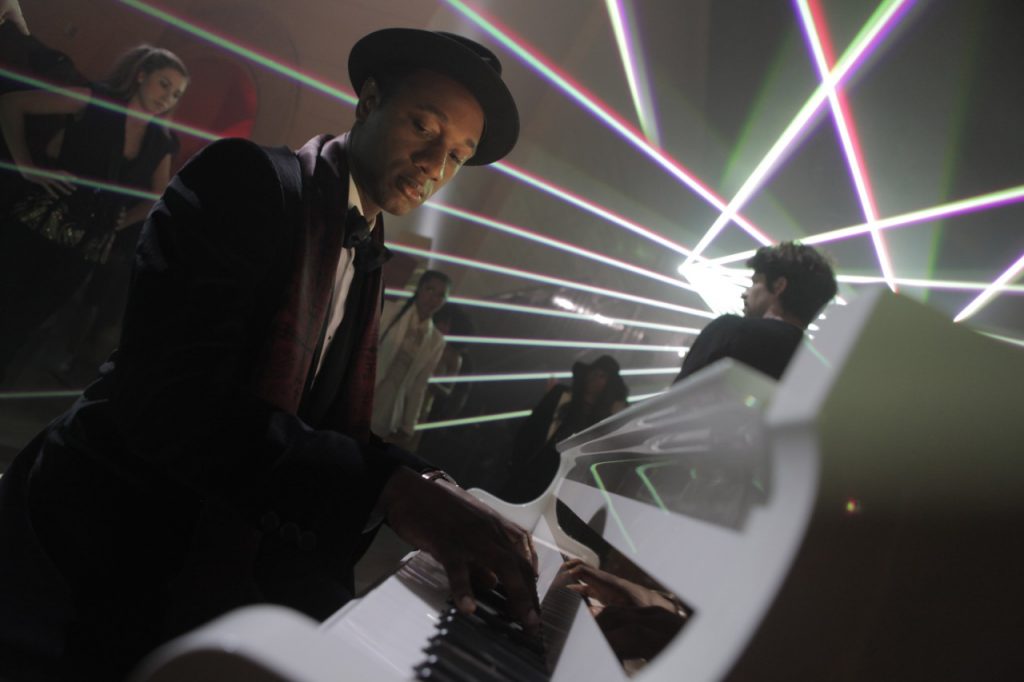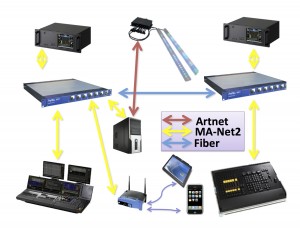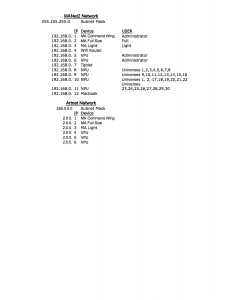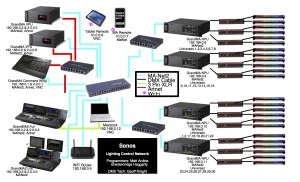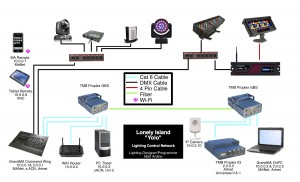Click here to watch the 9 minute pilot
The pilot for Adult Swim’s Pound Hole had us take an empty warehouse and turn it into a night club. This was done in one day. The filming occurred over 3 days.
Directors: Daniels
Cinematographer: Larkin Seiple
Production Designer: Jason Kisvarday
Lighting Designer: Matt Ardine
Best Boy Electric: Mike Beckman
Moving Light Tech: Harold LaCuesta
Electrics: Steve Brody & Koby Poulton
Equipment
Lights
16 – Clay Paky Sharpy Beams
8 – Clay Paky K10 Wash
8 – ETC Source 4 Lustre Series 2
2 – ETC Source 4 Series 2 Tungsten
2 – ETC Source 4 Series 2 Daylight
12 – Rolls of RGB Tape
3 – Litegear RGB Litestixs, 1 Meter
1 – Octodome, Hybrid LED
4 – Litegear 2’x4′ LED Hybrid Panel
3 – 4000 Lumen 1080p Projectors
1 – Litepanel 1×1 Bicolor
2 – Chauvet Geyser RGB
Control
1 – GrandMA2 Command Wing
1 – GrandMA2 OnPC computer
1 – GrandMA NPU
2 – Artnet Nodes
1 – Artnet Pixel Tube Controller
1 – MBOX Studio on a MacPro
1 – MBOX Studio on a MacBook Pro
1- MBOX Remote on a MacBook Pro
1 – 24 Port Gigabit Switch
1 – 8 Port Gigabit Switch
8 – Optosplitters
�
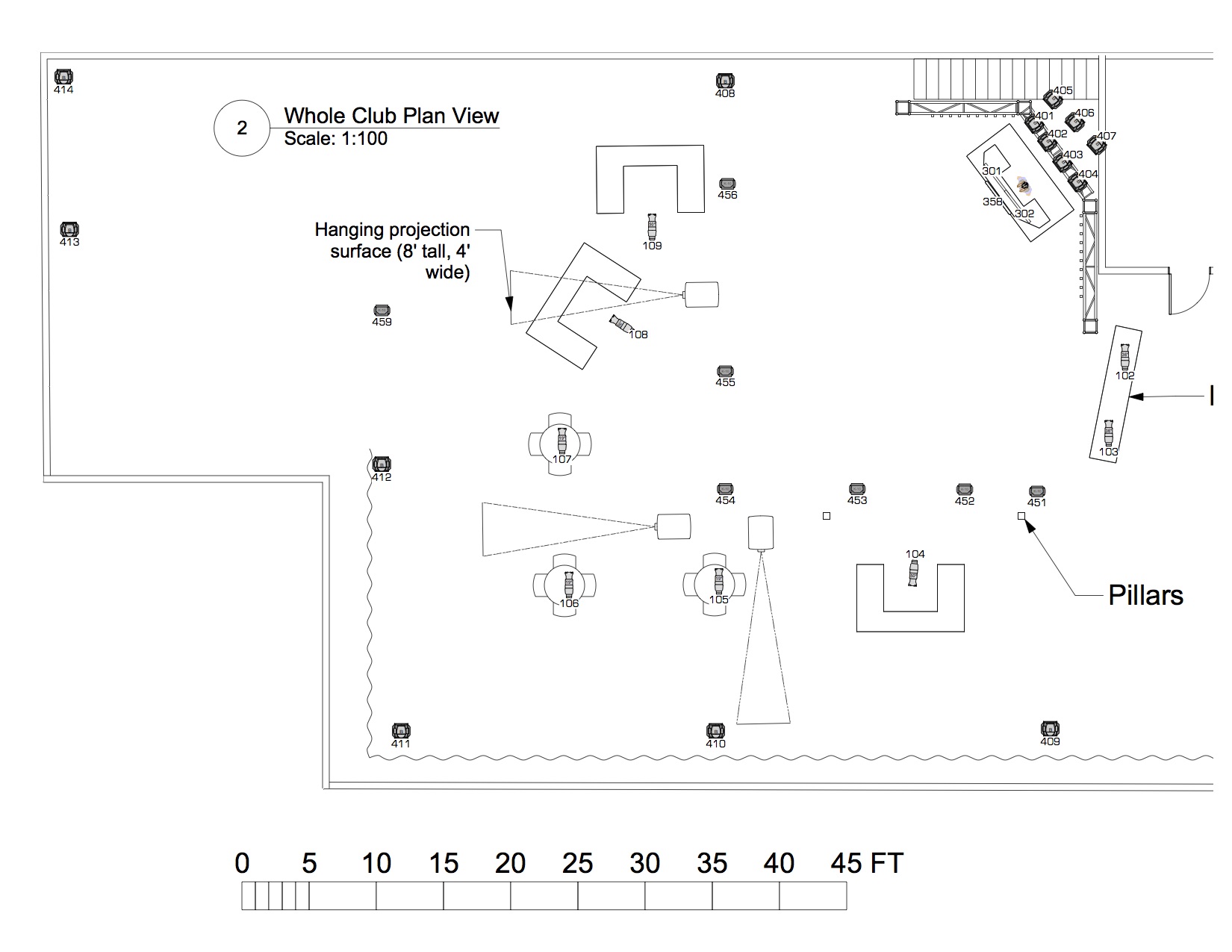
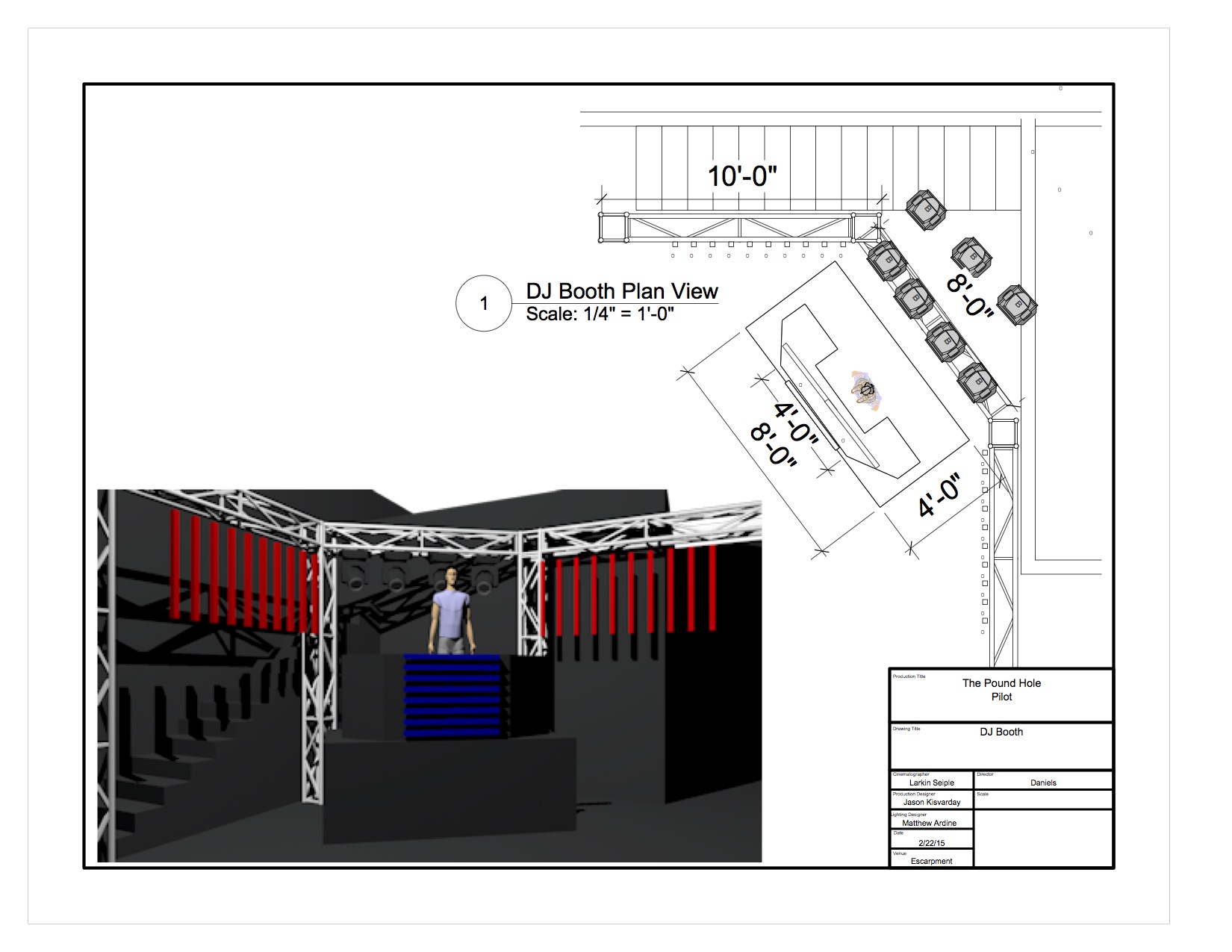
The main focus of the club is the DJ booth. Behind him are 20 of the high definition pixel tubes. They are being pixel mapped by an output on the MBOX then merged back into the console. See the picture below for the screen shot of the pixel map. The data is sent out from the MBox as sACN universe 109 thru 113 then merged in the GrandMA2 into universes 9 thru 13 using HTP. This allows me to use the effects engine in the MA2 or pixel mapping from the MBOX. Then the data is sent out Artnet from the MA. The pixel tubes’ controller takes Artnet directly in, which is nice since they take up 4.5 universes. On the face of the DJ booth are 8 of the Eurolite pixel tubes, which are also part of the same pixel map. I used the align rectangles effect to send one layer to the HD tubes and another layer to the Eurolite Tubes. On the truss behind him, there were 4 sharpies hanging behind him and 3 on the ground. He also had a source 4 lustre backlight and 3 litesitx RGB front lights on his desk.
In the club, there were sharpies around the building perimeter and K10’s around the dance floor perimeter. Over the center of the dance floor was the 5′ Octodome as downlight. Source 4 LED’s were downlights for the different tables and bars. The bar had RGB ribbon installed in it. There were pillars of iColor Accents in the background to provide a sense of space for the club.
There were 3 projection surfaces in the back of the club. They were each fed a discrete output. Both MBOX’s were in dual panoramic mode. On MBOX 1, output 1 went to projector 1 and output 2 went to projector 2. On MBOX 2, output 1 went to projector 3 and output 2 went to pixel mapping. The media servers were left in dimmer beach while the console and a laptop running MBOX remote sat on my console cart and rolled around set for each shot.
In dimmer beach, there was a PC running the GrandMA2 OnPC software. It is acting as the master. This is nice because it allows the roaming console to disconnect, move and reconnect without the lights hiccuping. It’s also convenient because it allows the roaming console to only need 1 cat5 cable running to it instead of 2 (MANET2 and Artnet). The master in a MA2 Network is the only one that outputs Artnet and any other protocol besides MANET2.
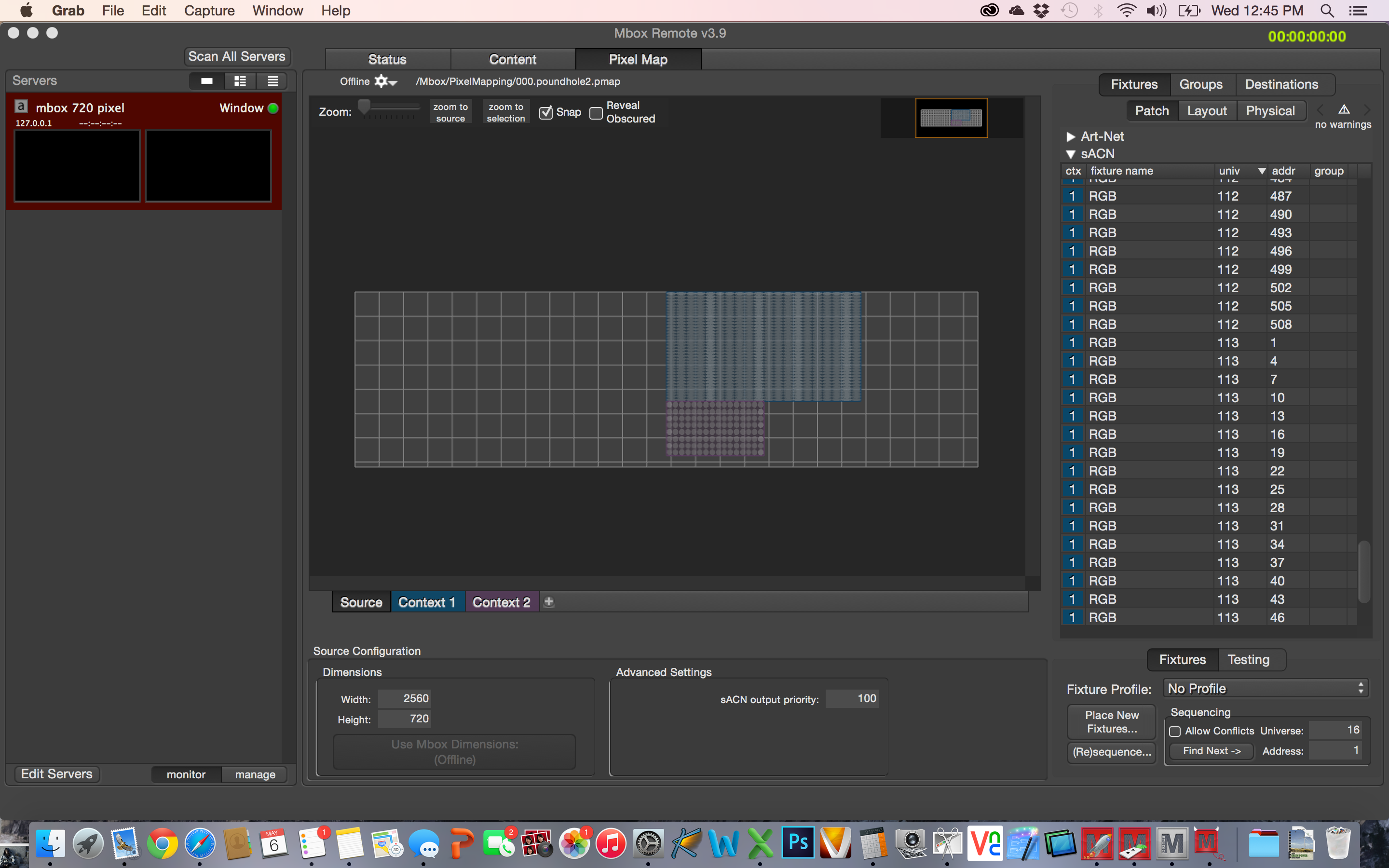
Click here for the patch sheet
